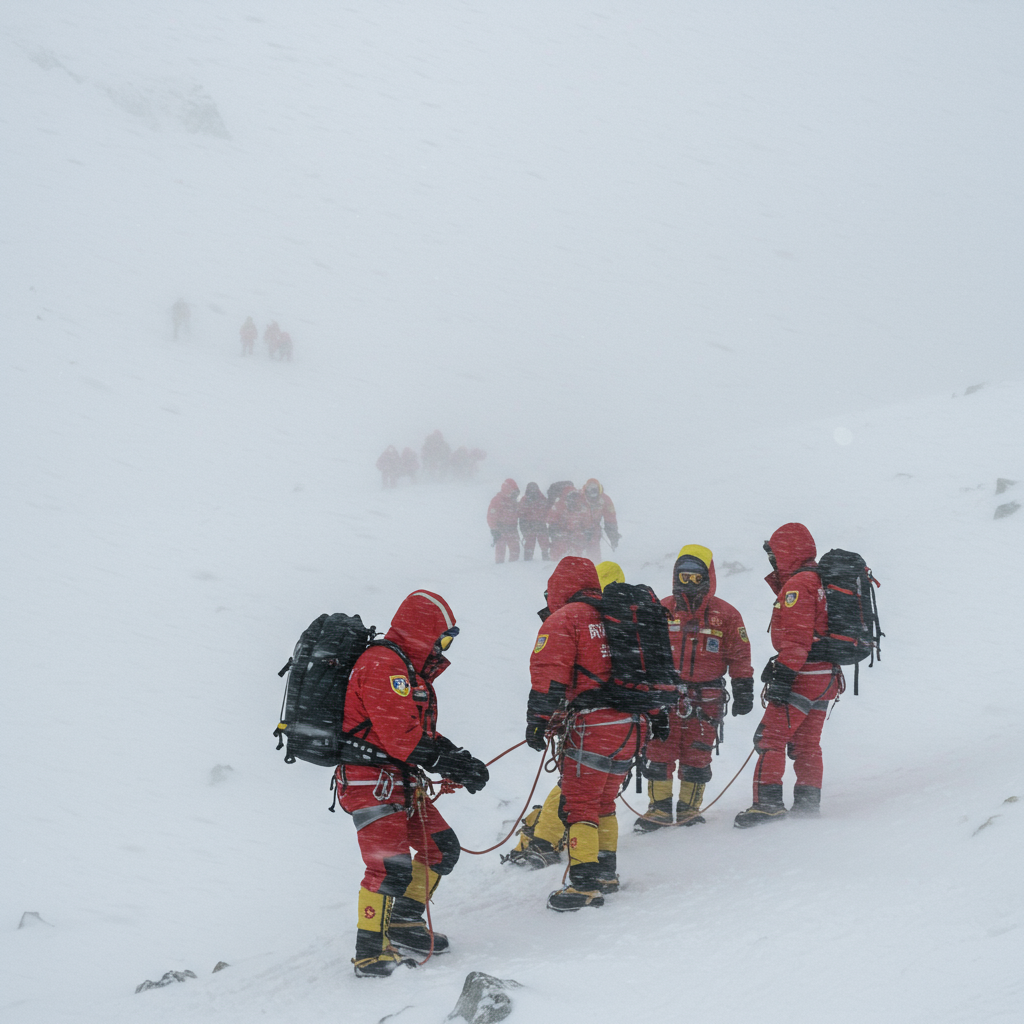Tens of thousands of Iranians gathered in Tehran for solemn state funerals honoring senior military commanders, nuclear scientists, and civilians killed during a recent twelve-day conflict with Israel. The large-scale ceremonies, held just days after a ceasefire was declared, transformed major streets into rivers of black-clad mourners waving flags and chanting slogans. This public display served as a powerful expression of national grief and defiance in the wake of intense hostilities that had shaken the region.
The funeral processions, which commenced early on Saturday morning, showcased coffins draped in the Iranian flag and bearing portraits of some of the deceased leaders in uniform. Trucks carried these caskets through the capital’s main arteries, where vast crowds had assembled. State media footage depicted emotionally charged scenes, with mourners holding pictures of those who perished in the Israeli attacks earlier in the month.
Honoring Fallen Leaders and Scientists
The state funerals provided a significant public tribute to prominent figures lost during the recent violence. According to Iranian state television reports, the ceremonies were held for a total of 60 individuals. This group included 16 scientists, 10 senior military commanders, four women, and four children, reflecting the diverse impact of the attacks.
Among the most high-profile figures honored were the chief of the Revolutionary Guard, General Hossein Salami, and the head of the Guard’s ballistic missile program, General Amir Ali Hajizadeh. Both commanders were reportedly killed on June 13, the very first day of the conflict when Israel launched its initial assaults. Their deaths represented a major blow to Iran’s military leadership.
Other senior officials confirmed killed in the attacks included Major-General Mohammad Bagheri, a key figure in Iran’s Revolutionary Guard. Top nuclear scientist Mohammad Mehdi Tehranchi was also among those lost. These deaths underscore Israel’s stated targeting of both military and scientific personnel linked to Iran’s strategic programs.
The funeral processions culminated in central locations like Azadi Square, where mass prayers were held. This large gathering marked the first public funerals for top commanders since the ceasefire took effect earlier in the week. The sheer scale of attendance highlighted the significance of these individuals to the state and many citizens.
Key Figures Honored at the Ceremonies
General Hossein Salami: Chief of the Revolutionary Guard
General Amir Ali Hajizadeh: Head of the Revolutionary Guard’s Ballistic Missile Program
Major-General Mohammad Bagheri: Senior Revolutionary Guard General
Mohammad Mehdi Tehranchi: Prominent Nuclear Scientist
- Ali Ghanaatkar: Top Prosecutor at Evin Prison (killed in a separate strike)
- www.cbsnews.com
- www.aljazeera.com
- www.arkansasonline.com
Government offices across Tehran were closed to allow public servants and citizens to attend the ceremonies, facilitating the massive turnout. The coffins of figures like Salami and Hajizadeh were notably driven on trucks along Azadi Street, symbolizing their final journey through the capital.
The Context of the Conflict and Ceasefire
The funerals followed a twelve-day period of intense hostilities that commenced on June 13 with Israeli strikes across Iran. Israel stated its primary objective was to dismantle Iran’s nuclear program and degrade its military capabilities. Israeli forces specifically targeted military sites, nuclear facilities, and individuals deemed central to these efforts, including commanders and scientists.
Iran swiftly responded to the Israeli assaults with its own missile attacks targeting Israel. The conflict escalated further when the United States intervened, conducting strikes on three nuclear sites within Iran the following weekend. Iran retaliated against the U.S. action by launching missiles at an American military base located in Qatar.
The fighting concluded with a ceasefire agreement reached on Tuesday. Both Israel and Iran claimed victory in the aftermath. Iran’s Supreme Leader, Ayatollah Ali Khamenei, downplayed the effectiveness of the U.S. strikes. He asserted that Iran had emerged victorious and rejected U.S. claims that Iran’s nuclear program had been severely set back. This narrative stands in contrast to assessments by international bodies regarding the damage inflicted.
Casualty figures released by the involved parties and other sources varied significantly. Israel claimed to have killed approximately 30 Iranian commanders and 11 nuclear scientists, while hitting eight nuclear-related facilities and over 720 military infrastructure sites. Iran reported firing over 550 ballistic missiles at Israel. While most were intercepted, Israeli figures indicate these strikes caused damage and resulted in 28 deaths. Tehran’s Ministry of Health and Medical Education reported a substantially higher civilian death toll in Iran from the Israeli attacks, stating at least 627 civilians were killed. A Washington-based Human Rights Activists group estimated the total death toll from the conflict exceeded 1,000, including at least 417 civilians in Iran.
Attendees and Atmosphere
The funeral ceremonies saw the attendance of numerous high-ranking Iranian officials. President Masoud Pezeshkian was present, alongside other senior figures. Notably, Ali Shamkhani, an adviser to Supreme Leader Ayatollah Ali Khamenei who was reportedly seriously wounded during the conflict, attended, pictured recovering from his injuries. Khamenei’s son, Mojtaba, was also among the attendees.
Images and state television broadcasts showed massive crowds filling the streets. Loud chants of “Death to America” and “Death to Israel” were prominently heard throughout the procession. This fervent display reflected deep-seated anti-U.S. and anti-Israel sentiments among the mourners, many of whom viewed the ceasefire as a temporary pause and expressed desires for future retaliation.
While televised coverage showed the vast public ceremonies, Supreme Leader Ayatollah Ali Khamenei was not publicly seen during the broadcast. He had not made a public appearance since before the war began. It was reported that Khamenei had privately held prayers over the coffins of some of the fallen commanders prior to the public ceremonies, a practice observed in past funerals for high-ranking military figures.
Political Reactions and Nuclear Program Status
The state funeral unfolded against a backdrop of continued political tension and a “war of words” between the United States and Iran, even after the ceasefire. U.S. President Donald Trump made controversial remarks on his social media platform, blasting Supreme Leader Khamenei for claiming victory. Trump claimed he knew Khamenei’s sheltered location but had prevented U.S. and Israeli forces from targeting him – a highly unusual and provocative statement.
Trump also asserted he had been working on potentially lifting sanctions against Iran but abandoned the idea following Khamenei’s post-ceasefire remarks. Iranian Foreign Minister Abbas Araghchi quickly responded via social media, stating that if President Trump was sincere about seeking a deal, he should cease his “disrespectful and unacceptable tone” towards Iran’s Supreme Leader.
Analysts noted that publicly criticizing or threatening Ayatollah Khamenei is highly sensitive in Iran. He is not merely the Supreme Leader but, according to the constitution, is the political and military head of state. Furthermore, within Shia political theology, his position holds a divine or near-divine status for many. As Al Jazeera’s correspondent in Tehran explained, anyone aware of this context would typically be meticulously careful to avoid public criticism, particularly accusations of dishonesty.
Regarding Iran’s nuclear program, which remains a central point of contention between Iran, Israel, and the U.S., differing assessments emerged post-conflict. While Supreme Leader Khamenei dismissed the impact of the U.S. strikes on nuclear sites like Fordo, the head of the International Atomic Energy Agency (IAEA), Rafael Grossi, offered a different perspective. Grossi characterized the damage to the Fordo site from American bunker-buster bombs as “very, very, very considerable.” However, Grossi also indicated that despite the severe damage, Iran retained the capability to resume its uranium enrichment program potentially “in a matter of months” if it chose to do so, emphasizing that the damage was significant but not entirely crippling to future capabilities.
Amidst this backdrop, U.S. President Trump suggested that negotiations on a new nuclear deal could restart soon. However, Tehran denied any such plans for an immediate resumption of talks. Iran’s parliament had previously voted to suspend certain collaborations with the IAEA. The diplomatic path forward remains highly uncertain following the conflict and the public displays of defiance and mourning at the state funerals.
Frequently Asked Questions
Who were the top Iranian officials and scientists honored at the state funeral?
The state funeral honored 60 individuals killed in recent Israeli attacks, including 16 scientists and 10 senior commanders. Prominent figures included General Hossein Salami, chief of the Revolutionary Guard, and General Amir Ali Hajizadeh, head of the Guard’s ballistic missile program, both reportedly killed on the conflict’s first day. Other notable deceased included Major-General Mohammad Bagheri and top nuclear scientist Mohammad Mehdi Tehranchi. The ceremonies also commemorated civilians, including four women and four children.
What was the background of the conflict leading to these deaths?
The deaths occurred during a twelve-day conflict initiated by Israel’s attacks on June 13, targeting Iran’s military and nuclear facilities with the stated goal of destroying its nuclear program. Iran retaliated with missile strikes on Israel. The conflict escalated when the United States conducted strikes on Iranian nuclear sites, prompting Iran to fire missiles at a U.S. base in Qatar. The fighting concluded with a ceasefire, though mutual claims of victory and casualty figures vary widely.
How did the recent conflict impact Iran’s nuclear facilities and program status?
The conflict involved targeted strikes on Iranian nuclear sites by the United States. While Iran’s Supreme Leader claimed the damage was insignificant and the program was not set back, the head of the IAEA described the damage to the Fordo site, for instance, as “very, very, very considerable.” Despite this, the IAEA head also stated that Iran likely retained the industrial and technological capacity to potentially resume uranium enrichment activities within months if it chose to do so, indicating the damage was severe but not necessarily program-ending.
The state funerals represent a significant moment for Iran, allowing public mourning and a demonstration of national unity and resistance following a period of intense conflict and loss. The ceremonies underscore the human cost of the regional tensions and highlight the political and ideological divides that persist despite the ceasefire. The diverse group of individuals honored, from top military leaders and scientists to civilians, reflects the widespread impact of the attacks. As burial plans proceed for individuals like Gen. Mohammad Bagheri in Tehran and others in their hometowns, the event marks a symbolic closure to the most recent chapter of open hostilities, while the underlying tensions, particularly regarding the nuclear program and political rhetoric, remain unresolved.




